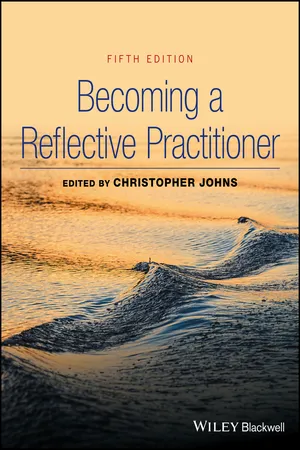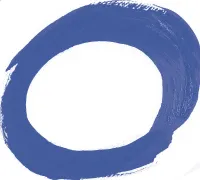
- English
- ePUB (mobile friendly)
- Available on iOS & Android
Becoming a Reflective Practitioner
About this book
'Christopher Johns is an internationally recognised pioneer of reflective practice in nursing and health care.' – Nursing Standard
Becoming a Reflective Practitioner provides a unique insight into reflective practice, exploring the value of using models of reflection, with particular reference to Christopher Johns' own model for structured reflection. Now in its fifth edition, this book has been completely revised and updated to include up-to-date literature and reflective extracts.
Contemporary in approach, this definitive text contains a variety of rich and insightful reflective extracts that support the main issues being raised in each chapter, and challenges practitioners and students to question their own practice. Now with further scenarios and case studies included throughout, these extracts provide the reader with access to the experience of reflective representation helping to explicate the way in which reflective practice can inform the wider notion of professional practice.
With an increase in professional registration requiring reflective evidence, this new edition of Becoming a Reflective Practitioner is an essential guide to all those using reflection in everyday clinical practice.
Frequently asked questions
- Essential is ideal for learners and professionals who enjoy exploring a wide range of subjects. Access the Essential Library with 800,000+ trusted titles and best-sellers across business, personal growth, and the humanities. Includes unlimited reading time and Standard Read Aloud voice.
- Complete: Perfect for advanced learners and researchers needing full, unrestricted access. Unlock 1.4M+ books across hundreds of subjects, including academic and specialized titles. The Complete Plan also includes advanced features like Premium Read Aloud and Research Assistant.
Please note we cannot support devices running on iOS 13 and Android 7 or earlier. Learn more about using the app.
Information
Chapter 1
Imagining Reflective Practice
Experience is a creative encounter

Reflective Practice
Reflection can mean all things to all people… it is used as a kind of umbrella or canopy term to signify something that is good or desirable… everybody has his or her own (usually undisclosed) interpretation of what reflection means, and this interpretation is used as the basis for trumpeting the virtues of reflection in a way that makes it sound as virtuous as motherhood.
Being mindful of self, either within or after experience, as if a mirror in which the practitioner can view and focus self within the context of a particular experience, in order to confront, understand, and become empowered to act towards resolving contradiction between one's vision of desirable practice and one's actual practice to gain insight within a reflexive spiral towards realising one's vision of practice as a lived reality and developing professional identity and artistry.
Contradiction
Barriers to rational change (Fay 1987)
- • Tradition: a pre-reflective state reflected in the assumptions and habitual practices that people hold about the way things should be.
- • Force: the way normal relationships are constructed and maintained through the use of power/ force.
- • Embodiment: the way people have been socialised to think, feel and respond to the world in a normative and pre-reflective way.
The goal of a critical social science is not only to facil...
Table of contents
- Cover
- Dedication
- Title Page
- Copyright
- Table of Contents
- Notes on Contributors
- Preface
- About the Companion Website
- Chapter 1: Imagining Reflective Practice
- Chapter 2: Writing Self
- Chapter 3: Engaging the Reflective Spiral: The Second Dialogical Movement
- Chapter 4: Framing Insights
- Chapter 5: Deepening Insights (The Third And Fourth Dialogical Movements)
- Chapter 6: Weaving and Performing Narrative: The Fifth and Sixth Dialogical Movements
- Chapter 7: Moving Towards a More Poetic Form of Expression
- Chapter 8: Reflection Through Art and Storyboard
- Chapter 9: The Reflective Curriculum
- Chapter 10: A Teaching Dilemma Journal Entry
- Chapter 11: Life Begins at 40
- Chapter 12: Reflection on Touch and the Environment
- Chapter 13: ‘Opening My Mind’: The Ripples of Story
- Chapter 14: Guiding First-year Nursing Students in Guided Reflection
- Chapter 15: Guiding Third-Year Nursing Students in Guided Reflection
- Chapter 16: A Tale of Two Teachers
- Chapter 17: Teaching Teachers about Teaching
- Chapter 18: Reflective Teaching as Ethical Practice
- Chapter 19: A Reflective Framework for Clinical Practice
- Chapter 20: The Standards Group
- Chapter 21: Trudy
- Chapter 22: Reflective Leadership
- Chapter 23: ‘People are not Numbers to Crunch’
- Chapter 24: Smoking Kills
- Chapter 25: Anthea: An Inquiry into Dignity
- Appendices
- Index
- End User License Agreement